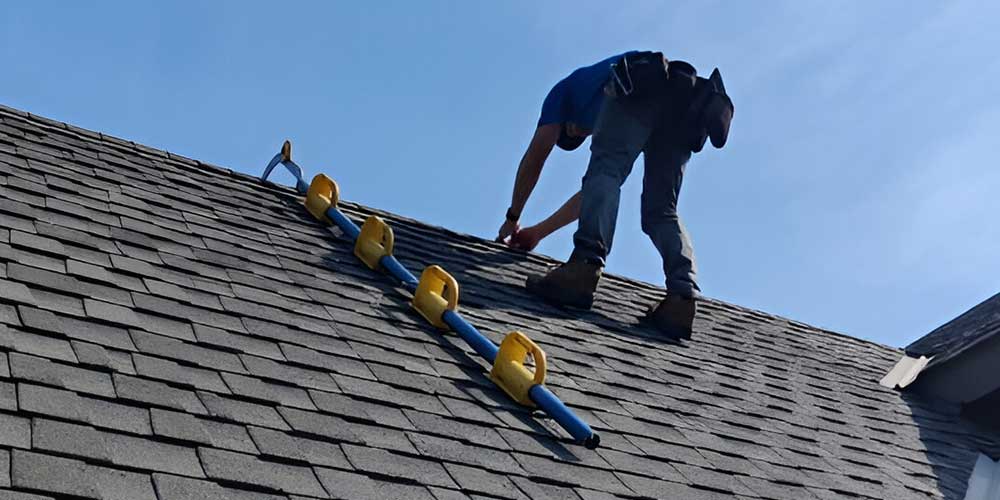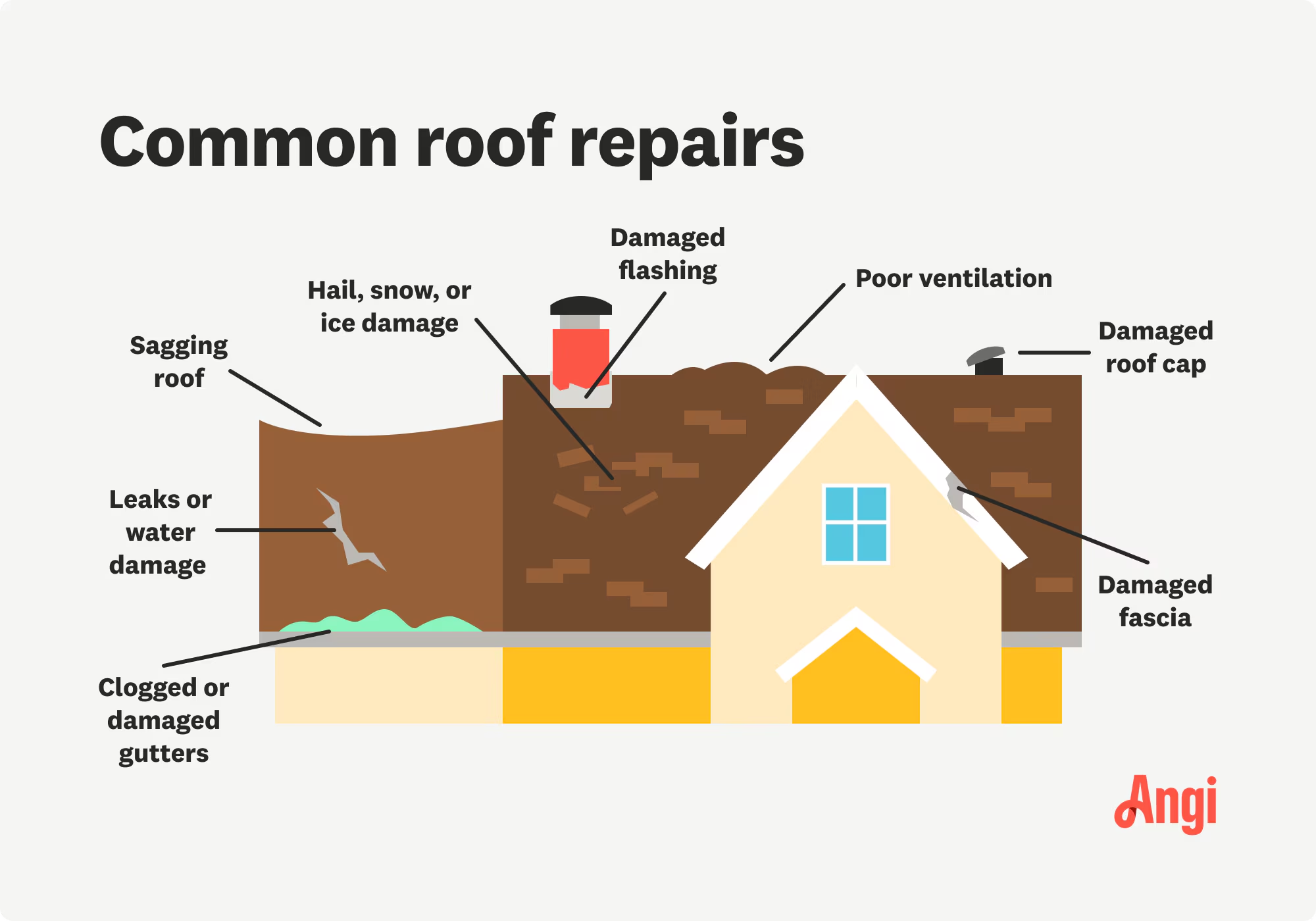Roofers Oahu: Expert Roof Installations and Repair Works
Wiki Article
Recognizing the Various Sorts Of Roofs: A Comprehensive Guide for Homeowners
In the realm of homeownership, selecting the suitable roof style is a decision that carries considerable ramifications for both capability and aesthetic appeal. With an array of choices-- varying from the standard gable to the contemporary level-- each type offers distinct benefits and challenges that need to align with the homeowner's certain needs and ecological considerations. Recognizing these differences not only aids in making an enlightened selection however also influences lasting upkeep and energy performance. As we check out the ins and outs of different roofing system types, it comes to be obvious that a person size does not fit all; the appropriate option may stun you.Saddleback Roof
Saddleback roofs, defined by their triangular form, are among one of the most popular roof styles because of their simpleness and effectiveness in dropping water and snow. This layout features 2 sloping sides that meet at a ridge, enabling efficient drainage and decreasing the threat of water build-up. The high pitch generally related to gable roof coverings enhances their capacity to handle hefty rainfall, making them ideal for numerous climates.In addition to their useful advantages, saddleback roofs use visual versatility. They can be adapted to various building designs, from traditional to contemporary homes. The style can likewise suit added attributes such as dormer home windows, which enhance natural light and ventilation in the attic space.
Furthermore, gable roofings supply enough room for insulation, adding to power performance. Property owners can select from a range of roof materials, including asphalt roof shingles, metal, and tiles, even more enhancing customization options.
Despite their advantages, saddleback roofs might need extra support in areas vulnerable to high winds or hefty snowfall. Generally, the gable roofing stays a preferred choice due to its mix of capability, longevity, and aesthetic charm.
Flat Roofs
Level roofings are commonly acknowledged for their minimalist layout and functional applications, especially in industrial and commercial setups (oahu roofing). These roofing systems feature a straight or virtually straight surface, which permits very easy building and construction and versatile room use. While they may do not have the aesthetic allure of pitched roofings, flat roof coverings use numerous benefits, especially in city atmospheres where making best use of area is crucialAmong the key benefits of flat roofings is their ease of access. Home owners can utilize the roof covering area for numerous purposes, such as rooftop yards, terraces, or photovoltaic panel installments. Furthermore, level roofs are normally more economical to keep and mount compared to their sloped counterparts, as they call for fewer materials and labor.
Nevertheless, level roofs do present particular obstacles. Proper drain is important to avoid water pooling, which can cause leakages and structural damage. For this reason, picking top quality waterproofing materials and routine examinations are critical for guaranteeing durability. Usual products made use of for level roofs include built-up roofing (BUR), customized asphalt, and single-ply membrane layers, each offering distinctive advantages. On the whole, flat roofs serve as a adaptable and practical option for lots of home owners and businesses alike.
Hip Roofings
Hip roofing systems are characterized by their sloped sides that converge on top, developing a ridge. This style is unique from saddleback roofs, as all four sides of a hip roof covering incline downwards toward the walls, giving a much more stable framework. The angle of the inclines can vary, permitting versatility in building looks and performance.One of the key advantages of hip roofs is their capacity to stand up to heavy winds and damaging weather. The sloped surface areas enable far better water drain, decreasing the risk of leakages and water damage. In addition, hip roofing systems offer boosted attic room, which can be utilized for storage space and even exchanged comfortable areas.
Nonetheless, building a hip roof covering can be a lot more complex and expensive than simpler roof covering types, such as gable roof coverings. The additional product and labor associated with producing the inclines and guaranteeing correct structural honesty can lead to greater expenses. In spite of these drawbacks, lots of property owners prefer hip roofing systems for their durability, visual allure, and possibility for energy performance.
Mansard Roofings
Mansard roofings, frequently acknowledged by their one-of-a-kind four-sided design, feature 2 slopes on each side, with the reduced incline being steeper than the top. This architectural design, stemming from France in the 17th century, is not only aesthetically appealing but functional, as it maximizes the functional space in the upper floorings of a structure. The high lower slope permits for more headroom, making it a suitable choice for attics or loft spaces, which can be converted into living areas.Mansard roofs are identified by their versatility, suiting different architectural designs, from standard to modern. They can be constructed with different materials, consisting of asphalt shingles, slate, or steel, supplying house owners with a variety of options to fit their budgets and preferences. In addition, the style permits the assimilation of dormer home windows, boosting natural light and ventilation in the upper degrees.
Nevertheless, it is necessary to roofers oahu consider the possible disadvantages. Mansard roof coverings may need more upkeep as a result of the intricacy of their style, and their steep slopes can be challenging for snow and rain runoff. Generally, mansard roofings integrate style with practicality, making them a prominent option among house owners looking for distinct building functions.
Lost Roofings
As home owners progressively look for simplicity and functionality in their architectural styles, shed roofings have emerged as a preferred selection. Defined by a solitary sloping airplane, a shed roofing system offers a minimal aesthetic that matches different home styles, from contemporary to rustic.One of the key advantages of a shed roof is its simple building and construction, which often translates to decrease labor and product expenses. This design enables efficient water drainage, minimizing the risk of leakages and water damage. In addition, the vertical incline supplies ample room for skylights, improving all-natural light within the interior.
Lost roofs also use versatility in regards to use. They can be properly incorporated into enhancements, garages, or exterior structures like structures and sheds. Moreover, this roof design can fit numerous roof covering materials, consisting of steel, asphalt shingles, or perhaps environment-friendly roofing systems, lining up with green campaigns.
Nonetheless, it is vital to take into consideration local environment problems, as hefty snow loads might necessitate modifications to the roof covering's angle or framework. On the whole, shed roofing systems present a practical and visually pleasing option for homeowners seeking to maximize performance without jeopardizing style.
Verdict


Gable roofing systems, defined by their triangular form, are amongst the most prominent roofing styles due to their simpleness and efficiency in losing water and snow. oahu roofing. The steep pitch typically linked with gable roofings improves their capacity to manage hefty precipitation, making them appropriate for numerous environments
While they may do not have the aesthetic charm of pitched roofs, flat roofing systems provide various advantages, specifically in urban environments where maximizing space is crucial.

Report this wiki page